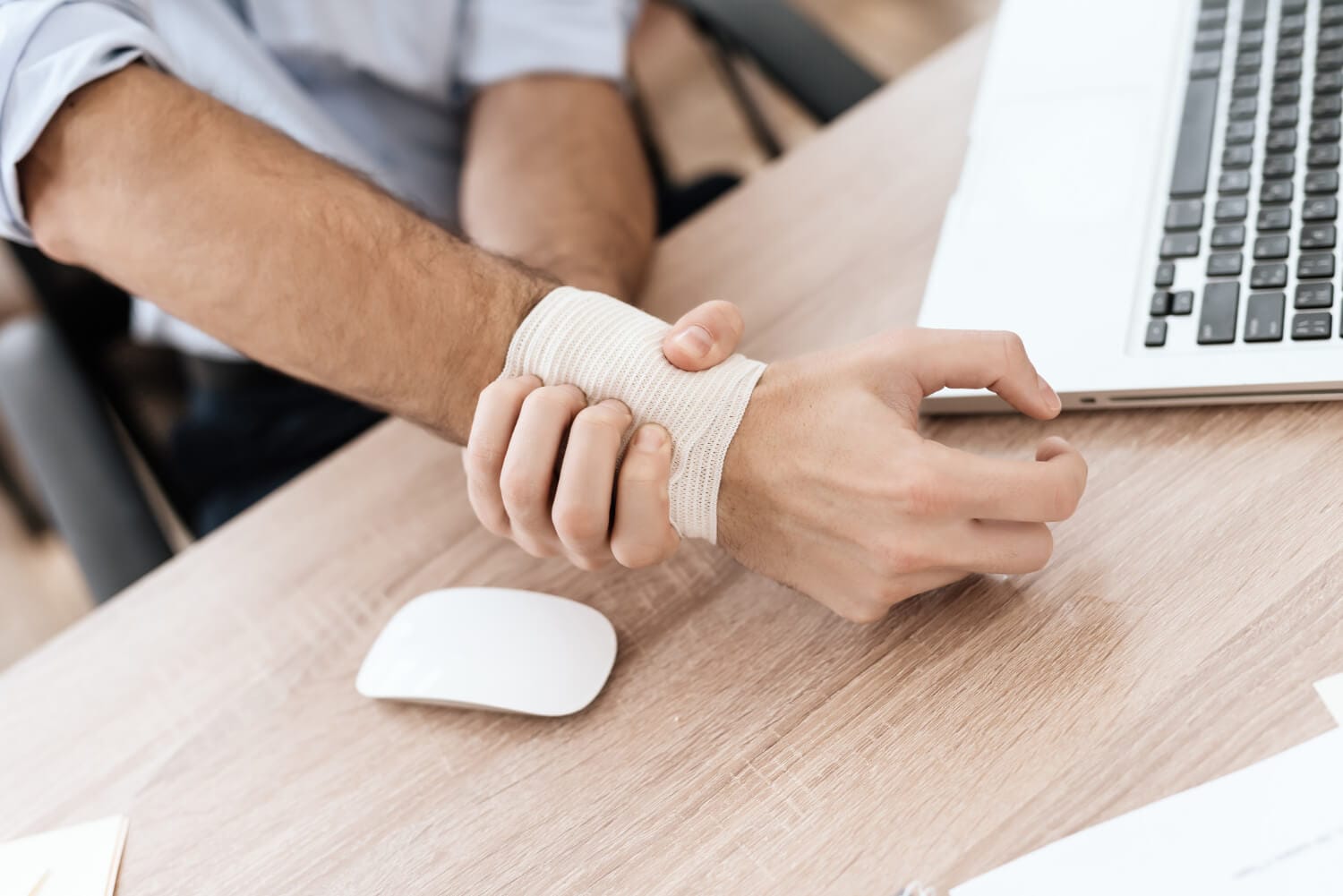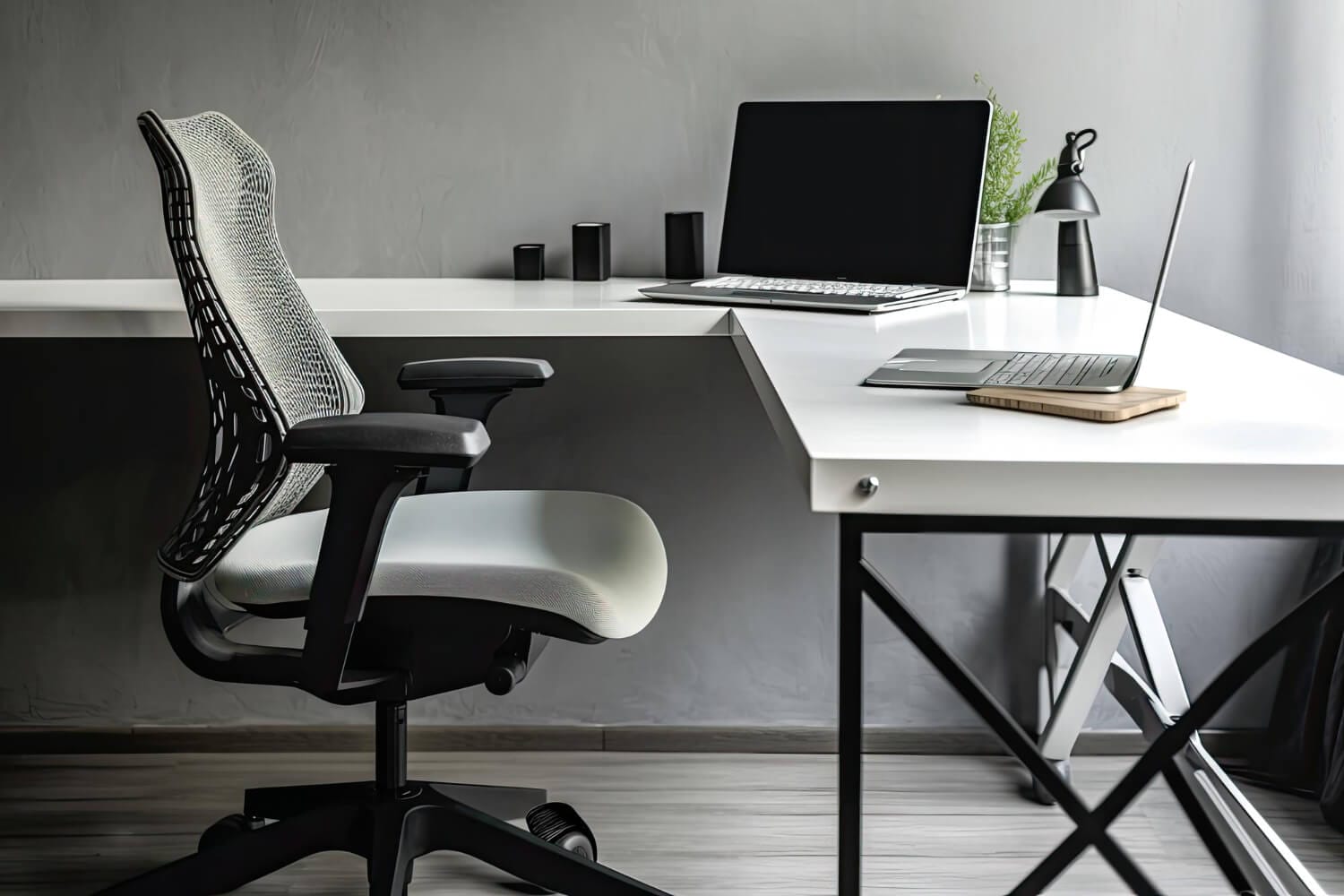
Trading poses significant risks to our health, given the sedentary nature of the profession and the modern lifestyle it entails. While the human body is remarkably adaptable, and the rapid pace of societal transformation presents significant challenges and hazards. We’ve shifted from a predominantly outdoor, physically active society to one where we spend most of our time seated, engage in sedentary work, face mental stress without adequate outlets, and are constantly exposed to bright screens from morning till night.
As traders, our days are primarily spent in a sedentary state, exposed to ongoing stress, while striving for peak performance. In this article, we explore the findings of medical and scientific research on how our trading lifestyle impacts our physiology and overall health. Moreover, we delve into strategies for mitigating these effects and promoting wellness in the trading community.
The Dual Nature of Stress in Trading
For traders, stress is an omnipresent force, accompanying us from the moment we initiate trades to managing them amidst market volatility, until their eventual closure. While stress itself isn’t inherently negative, the combination of chronic stress and an imbalanced, sedentary lifestyle can prove disastrous for traders.

A study revealed that a staggering 90% of illnesses and diseases are stress-related, underscoring the importance of addressing stress management in trading.
During moments of stress, our heart rate increases, triggering the prefrontal cortex—the region responsible for rational thought and decision-making—to temporarily shut down, ceding control to the midbrain, where impulsive reflexes and instincts reside. This physiological response explains why traders often make suboptimal decisions under stress, succumbing to ancient fight-or-flight instincts rather than rational analysis.
Chronic stress, inherent in the daily lives of traders, is associated with the shrinkage of the hippocampus, crucial for memory formation. Moreover, it can lead to cortisol dominance, negatively impacting learning, attention span, and memory—critical elements for successful trading. Additionally, chronic stress compromises the immune system, heightening susceptibility to illness, while also increasing the risk of heart disease and high blood pressure.
Sitting: A Silent Health Hazard
While the title may seem exaggerated, the findings from the studies we are about to present have indeed been surprising. It’s important to note that the studies on sitting discussed here are just a glimpse of numerous similarly significant findings:
- Over a 16-year period, researchers discovered that individuals who sit for prolonged periods face a 24% higher likelihood of dying from health-related issues.
- Furthermore, there’s an 18% increased risk of cardiovascular disease-related mortality and a 17% heightened risk of cancer mortality associated with extensive sitting.
- Perhaps most alarming is the staggering 91% increased risk of developing Type 2 diabetes due to prolonged sitting.
- Additional studies highlighted by sources such as com have linked sitting to obesity, increased cancer risk, premature death, muscular ailments, and higher rates of depression.

Before delving into specific strategies for achieving a more balanced lifestyle, it’s crucial to emphasize a significant finding. Doctors said “exercising for 30 minutes a day and remaining sedentary for the remaining 23 and a half hours is insufficient.”
Consider a typical day: commuting in cars or on subways (where we sit), spending most of the workday at desks with minimal movement except for coffee breaks or lunch, and returning home to evenings spent on the couch watching TV. It’s evident that relying solely on 30 minutes of exercise cannot counteract the adverse effects of such a sedentary lifestyle dominated by sitting.
The Impact of Prolonged Computer Mouse Use on Health: Unveiling Hidden Risks
Introduction: The computer mouse, seemingly innocuous, has become an indispensable tool in our daily lives, particularly for traders who spend hours navigating charts. However, beneath its convenience lies a myriad of health risks associated with its excessive use. This article delves into the various health issues stemming from prolonged mouse usage and explores strategies for mitigating these risks.
Section 1: Understanding the Health Risks: 1.1 Carpal Tunnel Syndrome:
- Prolonged mouse usage can lead to compression of the median nerve in the wrist, resulting in Carpal Tunnel Syndrome (CTS). Symptoms include numbness, tingling, and weakness in the hand and fingers. 1.2 Tenosynovitis / DeQuervain’s Syndrome:
- Constant clicking and scrolling with the mouse can inflame the tendons in the thumb, causing Tenosynovitis or DeQuervain’s Syndrome. This results in pain and swelling at the base of the thumb. 1.3 Tendonitis:
- Repetitive movements while using the mouse can lead to inflammation of the tendons, resulting in Tendonitis. Common areas affected include the wrist, elbow, and shoulder. 1.4 Thoracic Outlet Syndrome:
- Poor posture combined with prolonged mouse usage can compress the nerves and blood vessels in the thoracic outlet, leading to Thoracic Outlet Syndrome. Symptoms include pain, numbness, and weakness in the arms and hands. 1.5 Trigger Finger:
- Clicking the mouse repeatedly can strain the tendons in the fingers, leading to Trigger Finger. This condition causes the finger to lock or catch when bent.

Section 2: The Epidemic of Mouse-Related Injuries: 2.1 Postural Stress:
- Sitting for extended periods in front of a computer, coupled with repetitive mouse movements, contributes to postural stress. This can lead to a range of musculoskeletal issues, including neck pain, back pain, and shoulder pain. 2.2 Cumulative Trauma:
- The cumulative effect of repetitive mouse usage over time can result in cumulative trauma injuries. These injuries develop gradually and may become chronic if left unaddressed.
Section 3: Mitigating Health Risks: 3.1 Ergonomic Workstations:
- Invest in ergonomic mice and mouse pads designed to reduce strain on the hands and wrists. Opt for a mouse that fits comfortably in your hand and promotes a neutral wrist position. 3.2 Regular Breaks:
- Take frequent breaks to stretch and rest your hands, wrists, and shoulders. Incorporate micro-breaks into your trading routine to alleviate muscle tension and improve circulation. 3.3 Proper Posture:
- Maintain proper posture while using the mouse, ensuring that your wrists are in a neutral position and your shoulders are relaxed. Adjust your workstation ergonomics to support a healthy posture. 3.4 Exercise and Stretching:
- Incorporate exercises and stretches specifically targeting the hands, wrists, and shoulders into your daily routine. This can help prevent muscle imbalances and reduce the risk of repetitive strain injuries.
Conclusion: While the computer mouse may seem like a harmless tool, its prolonged use can have serious implications for our health. By understanding the associated risks and implementing preventive measures, traders can safeguard their well-being and enjoy a more comfortable and productive trading experience.
The Impact of Computer Screens and Artificial Lighting on Trader Health
Introduction: In our quest to address the major health concerns prevalent in the trading world, we have explored the issues of prolonged sitting, chronic stress, and the potential hazards of excessive mouse usage. Now, we turn our attention to another significant aspect of the trading environment: the impact of prolonged screen exposure and artificial lighting on trader well-being and health. Through our research, we have uncovered surprising findings that underscore the importance of optimizing our trading environment to safeguard our health.
Section 1: Effects of Screen Exposure on Melatonin Production: 1.1 Importance of Melatonin:
- Melatonin, a hormone produced by the body during the night, plays a crucial role in promoting recovery and regulating sleep-wake cycles. 1.2 Disruption by Bright Light:
- Research has long established that exposure to bright light before bedtime can disrupt melatonin production, leading to sleeping disorders and various health issues such as cardiovascular disease, cancer, and depression. 1.3 Blue Light Concerns:
- Blue light emitted by computer screens has garnered particular attention due to its potential impact on melatonin secretion and circadian rhythms. Studies suggest that exposure to blue light at night may increase the risk of cancer, diabetes, heart disease, and obesity.
Section 2: Health Risks Associated with Artificial Lighting: 2.1 Suppression of Melatonin:

- Artificial lighting, especially in the form of blue light, can suppress melatonin secretion, disrupting the body’s natural sleep-wake cycle and increasing the risk of various health conditions. 2.2 Impact on Sleep Quality:
- Shortened sleep duration due to exposure to artificial lighting has been linked to an increased risk of depression, diabetes, and cardiovascular problems.
Section 3: Strategies for Creating a Healthier Trading Environment: 3.1 Optimizing Desk Setup:
- The proper adjustment of desk height, screen positioning, chair ergonomics, and posture is crucial for minimizing the strain on the body during trading sessions. Resources are available to help traders assess and optimize their workstation setup. 3.2 Managing Screen Time:
- Implementing strategies to reduce screen time outside of trading hours, such as using blue light filters or switching to warmer lighting in the evening, can help mitigate the adverse effects of prolonged screen exposure on melatonin production. 3.3 Creating a Sleep-Friendly Environment:
- Creating a conducive sleep environment by dimming lights and avoiding screen exposure before bedtime can promote better sleep quality and overall well-being. 3.4 Prioritizing Self-Care:
- Incorporating regular breaks, stretching exercises, and relaxation techniques into the trading routine can help alleviate physical and mental strain and promote overall health and well-being.
Conclusion: As traders, we must recognize the significant impact of prolonged screen exposure and artificial lighting on our health and well-being. By implementing strategies to optimize our trading environment and prioritize self-care, we can minimize the risks associated with excessive screen time and create a healthier and more sustainable trading lifestyle.
Investing in Ergonomic Essentials for a Healthier Trading Lifestyle
Introduction: In the pursuit of a healthier trading lifestyle, it’s imperative to invest in ergonomic essentials that prioritize your well-being. From choosing the right office chair to selecting ergonomic peripherals, every decision can have a significant impact on your health and comfort during long trading sessions.

Section 1: The Importance of a Quality Office Chair: Investing in a high-quality office chair, such as the Aeron office chair favored by Moritz, may initially come with a steep price tag exceeding $700. However, considering the thousands of hours spent sitting, the long-term health benefits far outweigh the cost. A proper office chair supports optimal posture, reduces strain on the spine, and mitigates the risk of musculoskeletal issues associated with prolonged sitting.
Section 2: Ergonomic Mouse Solutions: The choice of mouse is another critical consideration for traders seeking to optimize their workstation setup. The Evoluent mouse is designed to emulate the natural hand posture, minimizing strain and discomfort associated with traditional mice. By promoting a more ergonomic hand position, this mouse helps reduce the negative effects of prolonged mouse usage on the hands and wrists.
Section 3: Wrist Exercises for Preventing Carpal Tunnel Syndrome: In addition to investing in ergonomic peripherals, incorporating wrist exercises into your daily routine can help prevent conditions like Carpal Tunnel Syndrome. Three simple exercises, performed regularly throughout the day, can help alleviate tension and strain in the wrists:
- Wrist Flexor Stretch: Extend one arm in front of you with the palm facing down, then use the opposite hand to gently pull the fingers towards the body until a stretch is felt in the wrist. Hold for 15-30 seconds and repeat on the other side.
- Wrist Extensor Stretch: Extend one arm in front of you with the palm facing up, then use the opposite hand to gently pull the fingers towards the body until a stretch is felt on the underside of the wrist. Hold for 15-30 seconds and repeat on the other side.
- Wrist Circles: Rotate the wrists in a circular motion, first clockwise and then counterclockwise, to promote flexibility and relieve tension in the wrists.
Section 4: Wrist Support for Keyboard Use: In addition to exercises, providing adequate wrist support while using the keyboard can further reduce the risk of musculoskeletal problems. Research has shown that using a soft wrist support can help alleviate pressure on the wrists and promote a more comfortable typing experience. Investing in a keyboard with built-in wrist support or using a separate wrist rest can provide added comfort and support during long trading sessions.
Conclusion: Incorporating ergonomic essentials into your trading setup is essential for maintaining optimal health and comfort during long hours of trading. From investing in a quality office chair to selecting ergonomic peripherals and incorporating wrist exercises, prioritizing your well-being will ultimately enhance your trading experience and longevity in the market. Remember, the investment in your health is invaluable, and every decision made towards creating a healthier trading environment is a step towards a brighter and more sustainable future.
Mitigating the Adverse Effects of Bright Computer Screens: Practical Solutions for Improved Well-being
Introduction: In the digital age, computer screens have become an indispensable tool in our daily lives, facilitating work, communication, and entertainment. However, prolonged exposure to bright computer screens, particularly at night, can have detrimental effects on our health and well-being. In this section, we explore practical solutions for reducing the negative impact of bright computer screens and promoting healthier screen usage habits.

Section 1: Introducing Flu.X for Screen Light Adjustment: Flu.X is a revolutionary tool designed to reduce the blue light emitted by computer screens, particularly during nighttime use. By adjusting the color temperature of the screen, Flu.X helps alleviate eye strain and minimize disruptions to sleep patterns caused by excessive screen exposure. Users are encouraged to give Flu.X a try and experience the noticeable difference in screen comfort and sleep quality. This tool is especially valuable for individuals who frequently work late into the night, as it can help mitigate the adverse effects of blue light on health.
Section 2: Leveraging Smartphone Settings for Screen Light Adjustment: In addition to desktop solutions like Flu.X, modern smartphones offer built-in settings options for adjusting screen light based on surrounding conditions. These adaptive brightness features automatically adjust the screen brightness and color temperature to match the ambient light, reducing strain on the eyes and promoting a more comfortable viewing experience. By enabling these settings, users can optimize their smartphone usage and minimize the negative effects of bright screen exposure.
Conclusion: Incorporating tools like Flu.X and leveraging smartphone settings for screen light adjustment are effective strategies for mitigating the adverse effects of bright computer screens on our health and well-being. By reducing blue light exposure and optimizing screen brightness and color temperature, we can alleviate eye strain, improve sleep quality, and promote overall screen comfort. As we strive to maintain a healthy balance between technology usage and well-being, these practical solutions offer valuable support in fostering healthier screen habits and enhancing our overall quality of life.
Embracing Stress-Reduction Techniques for Improved Well-being
Introduction: Chronic stress can have devastating effects on both our physical and mental health. In this section, we explore practical strategies for reducing stress and promoting overall well-being, including meditation, relaxation, and exercise. These techniques have been shown to counteract the negative effects of stress and prevent the onset of various diseases, offering a much-needed respite from the pressures of the trading world.
Section 1: Discovering Calm.com for Guided Meditation: Calm.com provides a convenient and effective way to escape the hustle and bustle of the markets and take a mini-vacation at your desk. With a variety of serene environments to choose from, such as water droplets, tropical rain, flowing rivers, or ocean waves, you can embark on a 10-minute guided meditation session to unwind and recharge. Fully immerse yourself in the experience and allow yourself to be transported to a state of calm and tranquility amidst the chaos of the trading floor.

Section 2: Exploring Headspace for Daily Meditation Practice: Headspace is another valuable tool for incorporating meditation into your daily routine. With a wide range of guided meditations tailored to different activities such as sports, commuting, and sleep, Headspace offers versatility and accessibility for users seeking to manage stress and improve their overall well-being. By committing to a regular meditation practice, you can cultivate mindfulness and resilience, empowering yourself to navigate the challenges of trading with greater clarity and composure.
Section 3: Embracing Relaxation and Exercise: In addition to meditation, incorporating relaxation techniques and regular exercise into your routine can further enhance stress reduction and promote overall well-being. Whether it’s taking short breaks throughout the day to practice deep breathing exercises, stretching, or engaging in physical activity outside of trading hours, prioritizing self-care is essential for maintaining balance and resilience in the face of market volatility and pressure.
Conclusion: By embracing stress-reduction techniques such as meditation, relaxation, and exercise, traders can effectively manage stress, improve their mental and physical health, and enhance their overall quality of life. Whether it’s taking a mini-vacation at your desk with Calm.com, integrating daily meditation practice with Headspace, or incorporating relaxation and exercise into your routine, prioritizing self-care is essential for thriving in the demanding world of trading. Remember, investing in your well-being is the ultimate key to long-term success and fulfillment in both your personal and professional life.
Simple and Effective Health Tips for a Better Lifestyle
Introduction: In this article, we aim to provide you with easy-to-follow health tips that can help improve the quality of your days and enhance your overall well-being. While we may not cover an extensive health and exercise plan, these simple tips are designed to raise awareness and encourage mindfulness, empowering you to make better decisions for your health and lifestyle.

Section 1: Prioritize Nutrition:
- Start your day with a nutritious breakfast rich in fiber, protein, and healthy fats to fuel your body and kickstart your metabolism.
- Incorporate plenty of fruits, vegetables, whole grains, and lean proteins into your meals to ensure a well-balanced diet.
- Stay hydrated by drinking plenty of water throughout the day, and limit your intake of sugary drinks and processed foods high in sodium and unhealthy fats.
Section 2: Move Your Body:
- Incorporate physical activity into your daily routine, whether it’s taking a brisk walk, practicing yoga, or hitting the gym for a workout session.
- Aim for at least 30 minutes of moderate exercise most days of the week to promote cardiovascular health, improve mood, and boost energy levels.
- Find activities you enjoy and make them a regular part of your routine to stay motivated and committed to your fitness goals.
Section 3: Practice Mindfulness:
- Take time to pause and focus on the present moment, whether it’s through meditation, deep breathing exercises, or simply enjoying a quiet moment of reflection.
- Pay attention to your thoughts, feelings, and sensations without judgment, and cultivate a sense of gratitude for the little things in life.
- Incorporate mindfulness into everyday activities, such as eating mindfully, walking mindfully, or even brushing your teeth mindfully, to bring a greater sense of awareness and presence to your daily life.
Conclusion: While this article may not provide a comprehensive health and exercise plan, these easy-to-follow tips serve as a reminder of the importance of prioritizing your health and well-being in your daily life. By focusing on nutrition, incorporating physical activity, and practicing mindfulness, you can make small yet impactful changes that contribute to a healthier and happier lifestyle. Remember, it’s the little habits and choices we make each day that add up to significant improvements in our overall health and quality of life.
Don’t trade all the time, trade forex only at the confirmed trade setups.
Get more confirmed trade setups here: forexgdp.com/buy/

